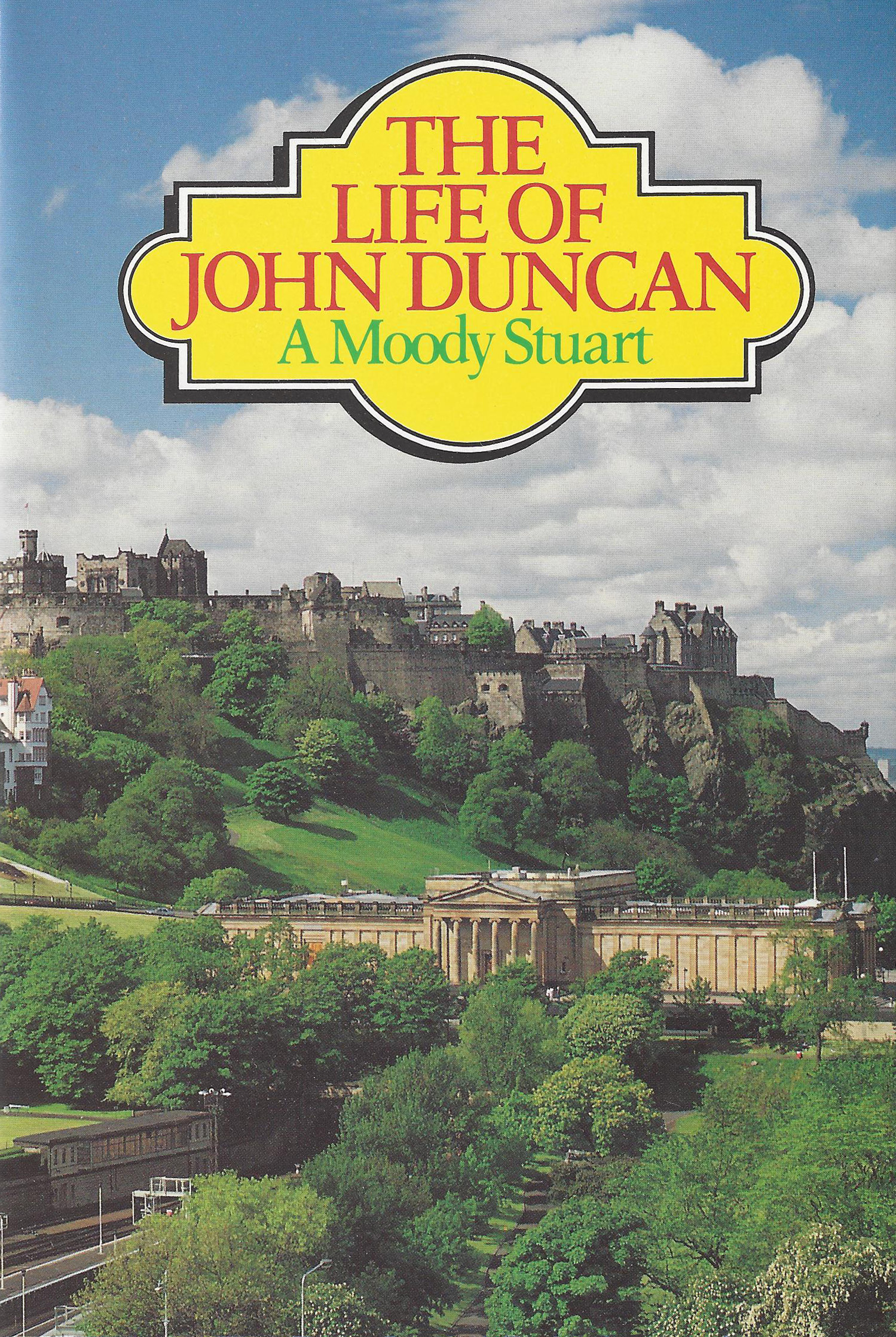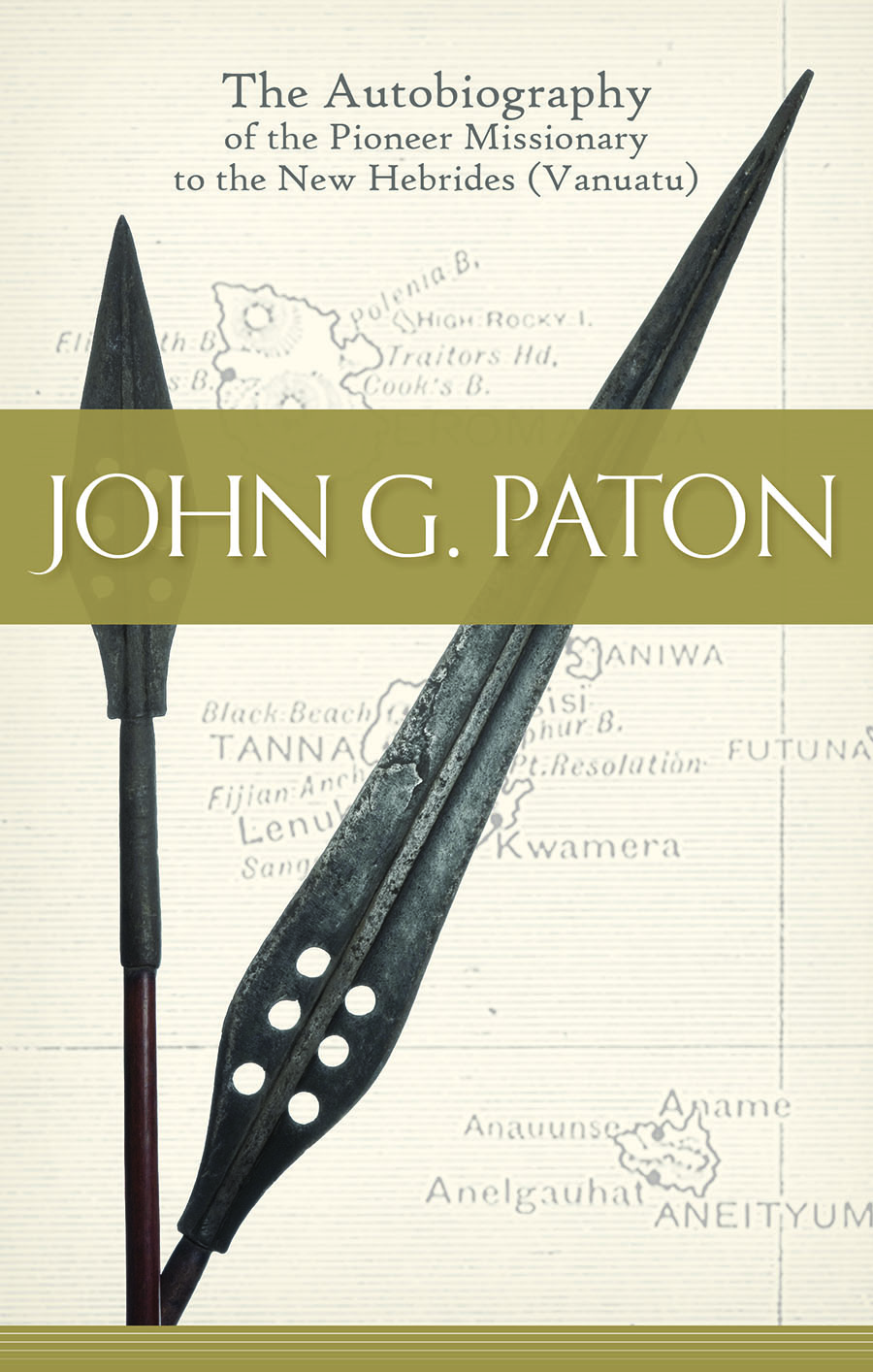The Covenanters
A History of the Church in Scotland from 1540-1690
| Weight | 1.63 kg |
|---|---|
| Dimensions | 22.4 × 14.5 × 7.2 cm |
| ISBN | 9781848719279 |
| Binding | Cloth-bound, eBook (ePub & Kindle), Cloth-bound & eBook (ePub & Kindle) |
| format | Book |
| page-count | 1136 |
| Original Pub Date | 1908 |
| Banner Pub Date | Dec 10, 2019 |
EndorsementsRead More ↓
‘We all owe you a deep debt of gratitude for that wonderful book — The Covenanters.’ — LORD GUTHRIE, 1908
‘His history is a triumphant vindication of the place which belongs to the Covenanters in the making of Scotland.’ — THE EXPOSITORY TIMES, 1908
‘Dr Hewison has written a great book, one for which all true Scotsmen will thank him.’ — REV. ALEXANDER SMELLIE, 1908
‘As a work of original research, containing a mass of information, the accumulating and arranging of which could have been no light task, it evokes a tribute of admiration.’ – THE SCOTSMAN, 1908
‘This is a monumental work.’ — THE SCOTTISH REVIEW, 1908
‘It will be long ere sufficient fresh facts will be divulged to admit of any work superseding his in respect of copious and relevant detail.’ — THE SPECTATOR, 1908
‘Dr Hewison’s is a work which one might almost say is the last word on the subject.’ — THE UNITED FREE CHURCH
Book Description
The progress and persecution of evangelical Christianity in Scotland from 1560 to 1689 is the subject of these rare volumes. In that history, ‘covenants’ were oaths of allegiance which bound Christians, their bodies and possessions, to the furtherance of ‘all things required of God in his Scripture, that may be to his glory.’ Handwritten and circulated from 1557, when martyrdom was still a prospect for the few who pledged themselves, the covenants became a crucial part of an immense struggle to uphold the Bible in the Church and nation. After ‘the National Covenant’ of 1638, ‘Covenanters’ became the accepted name, honoured by the sufferings of perhaps 18,000, before the Stuart monarchy fell in ‘the glorious revolution’ of 1689.
After that date, controversy over these men and women was to continue. Some authors pitied them as fanatics, others as heroes whose lives were outstanding examples of devotion. This great work of James King Hewison has three distinctive characteristics. First, he aimed by exact research at ‘an absolutely impartial account,’ not accepting traditional representations from either side which lacked firm evidence. Second, he took care to show how the covenanting movement was bound up with many political events, leading to the making of a new nation. And third, he believed the covenanting story is one of intrinsic interest, vigour and power. In the view of Alexander Smellie, the result is ‘a great book, one for which all true Scotsmen will thank him.’
The Solemn League and Covenant
Cost Scotland blood—cost Scotland tears:
But it sealed Freedom’s sacred cause—
If thou’rt a slave, indulge thy sneers.
— Robert Burns
Table of Contents Expand ↓
| VOLUME 1 | ||
| Preface to Revised and Corrected Edition (1913) | ix | |
| Original Preface (1908) | xi | |
| 1 | The Historical Beginnings of the Covenanters, 1545-1561 | 1 |
| 2 | Mary Queen of Scots and the Romanist Reaction, 1561-1567 | 49 |
| 3 | The Establishment of the Church by Law, 1567-1580 | 67 |
| 4 | The King’s Confession, 1580-1582 | 91 |
| 5 | The Fight for Prerogative,1582-1603 | 115 |
| 6 | Clerical Life and Learning after the Reformation, 1560-1625 | 153 |
| 7 | The Erastian King, 1603-1625 | 173 |
| 8 | The Liturgy Imbroglio, 1625-1637 | 207 |
| 9 | The National Covenant, 1637-1638 | 245 |
| 10 | The Glasgow Assembly and the Abolition of Episcopacy, 1638 | 275 |
| 11 | The First Bishops’ War, 1638 | 309 |
| 12 | The Second Bishops’ War. 1639-1641 | 323 |
| 13 | ‘Lex Rex’–The Rise of Parliamentary Power– The King in Scotland, 1641 | 345 |
| 14 | The Solemn League and Covenant, 1642-1643 | 361 |
| 15 | The Westminster Standards, 1643-1650 | 379 |
| 16 | The Great Civil War: The Struggle for Liberty of Parliament and Freedom of Conscience, 1644-1645 | 393 |
| 17 | The Engagement–The Fall of Charles First and of Montrose, 1641-1650 | 423 |
| APPENDICES | ||
| 1 | The Nationall Covenant | 459 |
| 2 | A Solemn League and Covenant | 471 |
| 3 | Extant Copies of the Scottish Covenants | 475 |
| 4 | Extant Copies o the British Solemn League and Covenant | 491 |
| 5 | Acts of Parliament Relative to the Covenants | 495 |
| 6 | The Irish Massacre of 1641-1642 | 497 |
| 7 | The Westminster Confession of Faith and the Proofs | 499 |
| 8 | Crimes and Sufferings of the Scottish Clergy from 1560 till 1690 | 501 |
| 9 | The Samuel Rutherford Scandal | 503 |
| VOLUME 2 | ||
| 18 | Scotland’s Three Rulers–Church, Charles, and Cromwell, 1650-1651 | 1 |
| 19 | The Rule of the Ironsides, 1651-1660 | 39 |
| 20 | The Restoration, 1660-1661 | 63 |
| 21 | Condition of the Country in the Seventeenth Century–The Covenanters: the Gentlemen of the Restoration | 97 |
| 22 | Reconstruction of the Church, 1661 | 125 |
| 23 | The Rule of Rothes and the Rising of Rullion Green,1663-1667 | 165 |
| 24 | The Schemes of Angelic Leighton and Iron-Handed Lauderdale, 1668-1678 | 215 |
| 25 | The Exit of Sharp, 1679 | 271 |
| 26 | The Rise of Claverhouse, 1678-1679 | 287 |
| 27 | The Remnant, 1679-1682 | 317 |
| 28 | The Policy of Rope and Gun, 1682-1683 | 353 |
| 29 | The Adventure of Renwick: Claverhouse and the Killing Times, 1683-1685 | 403 |
| 30 | The Inlet of Popery, 1685-1688 | 445 |
| 31 | The Revolution, 1688-1690 | 503 |
| APPENDICES | ||
| 1 | Literary Men and Their Works from 1625 till 1690 | 531 |
| 2 | Epitaphs on the Monuments of Some of the Most Famous of the Martyrs | 543 |
| 3 | The United Societies | 553 |
| 4 | The Cess | 557 |
| 5 | The Wodrow Manuscripts | 559 |
| 6 | Acts of Parliament Repealed in 1906 | 561 |
| 7 | Ordination in the Church of Scotland | 569 |
More items to consider:

Description
EndorsementsRead More ↓ ‘We all owe you a deep debt of gratitude for that wonderful book — The Covenanters.’ — LORD GUTHRIE, 1908 ‘His history is a triumphant vindication of the place which belongs to the Covenanters in the making of Scotland.’ — THE EXPOSITORY TIMES, 1908 ‘Dr Hewison has written a great book, one […]

Elizabeth Prentiss
More Love to Thee
Description
EndorsementsRead More ↓ ‘We all owe you a deep debt of gratitude for that wonderful book — The Covenanters.’ — LORD GUTHRIE, 1908 ‘His history is a triumphant vindication of the place which belongs to the Covenanters in the making of Scotland.’ — THE EXPOSITORY TIMES, 1908 ‘Dr Hewison has written a great book, one […]

John G. Paton
The Autobiography of the Pioneer Missionary to the New Hebrides (Vanuatu)
Description
EndorsementsRead More ↓ ‘We all owe you a deep debt of gratitude for that wonderful book — The Covenanters.’ — LORD GUTHRIE, 1908 ‘His history is a triumphant vindication of the place which belongs to the Covenanters in the making of Scotland.’ — THE EXPOSITORY TIMES, 1908 ‘Dr Hewison has written a great book, one […]


Ben House –
OCTOBER 9, 2020 BY PUNICWARS55
The Covenanters by J. K. Hewison
The Covenanters, two volumes, written by J. K. Hewison, is published by Banner of Truth. Hewison was a historian, author, and Presbyterian minister who lived from 1853 to 1941. This work was originally published in 1908, was revised in 1913, and was reprinted by Banner of Truth this past year in a beautiful two volume hardcover edition.
Americans tend to superficially think that issues relating to conflicts between Church and State were all basically solved by the First Amendment and Thomas Jefferson’s Wall of Separation letter. Any time matters arise where the two entities butt heads, it is seen as a throwback to an older, less enlightened, more superstitious, almost theocratic age where religious leaders zealously kept the fires burning with freethinking martyers.
Granted, there are plenty of ugly, horrifying stories from the past related to abuses by the Church (and you can identify that institution with any branch you wish) and leaders in the name of Christ. Movies have continued to add to that narrative. And no one should give carte blanche defense of all actions done “in the name of Christ.”
Often less noticed is the of the State (and fill in any regime from history you wish) in persecuting beliefs, restricting freedom of religion, and using civil power to coerce religious belief. Even more a problem is what has been previously said in this post: People think that these matters were all in the past and that any present attempt to raise church/state issues is a throwback to less enlightened days.
Nothing is more certain and sure than the fact that society, government, political philosophy, and people are in a culture war. And culture, as Henry Van Til famously said, is religion externalized. Every issue confronting us today is not just political, social, economic, or racial, but rather theological.
Augustine was right on target in his contrast between the City of God and the City of Man. We no longer see Visigoths pillaging and plundering Rome, but we are seeing things not totally unlike that. (Sorry for any unfavorable aspersions cast by comparing the Visigoths to the current barbarian onslaught.) The battles are constantly being waged between more godly and less godly ways of dealing with social unrest. Lest I be misunderstood, I am not implying that one American political party represents God’s truth marching on while the other is in thralldom to Satan.
Studying history does not provide a series of pat answers or blueprints of exact ways to deal with the present. As a history teacher and student, I hate the phrase “History shows….” I hate it not because it is not a useful concept, but because the “Book of History” is too vast and complex. History shows anything and everything you want it to show.
But dismissing the simplistic is not a reason to dismiss history. History provides perspectives. History reminds us that we are not alone or unique or in the midst of a never-seen-before set of circumstances.
This is why The Covenanters is so important for these times.
The age of the Protestant Reformation was one of the most turbulent times in European and world history. On the one hand, it entailed many a man and woman poring over often newly translated Bibles and theological tracts. It involved priests and laymen standing up amidst congregations and saying, “We have previously been taught this, but now, in the light of Scripture we affirm this other thing.” In other words, it was a spiritual, personal, and intensely religious revolution.
But religion is not a genie in a bottle. You cannot put it in a bottle. Religion is, as said earlier and often, culture, worldview, and life. If I were to become Amish, that would affect my views and interactions with politics. The same is true if I become anything else, as it certainly did happen in my case when I became Reformed.
The Reformation spread across Europe to the citadels of power and to the lesser powers of the day. The story of the Reformation in Scotland would appear to be simply the short addendum to a huge story, but small, obscure Scotland exerted a mighty force during the age of Calvin, Luther, Cranmer, and others.
John Knox rightly carved his own place in the lineup of Protestant Reformers. Knox has received both the praise of many (usually those in the Reformed theological tradition or those of Scottish heritage or both) and the unmitigated scorn of others.
He was no lightweight. He was tough, aggressive, determined, but also filled with the zeal of the Lord. In one sense, he is the key player in Hewison’s two volumes, but he died relatively early in the on-going post-Reformation war in Scotland. Also, he was standing upon the shoulders of several men who preceded him in the fight. The name of Melville also stands alongside that of Knox in the battle for the soul of Scotland.
The problems in Scotland intensified when James VI, son of Queen Mary Stuart, ascended to the throne of England and became James I of that country. James had been raised, and, perhaps a little too strongly, force-fed Protestant theology. He proved to be no friend to his fellow countrymen in Scotland nor to the Puritans in England.
When his son, Charles I, became king of the realms, matters worsened. Controversy intensified when an Episcopal prayer book was imposed upon the Scottish church. This prayer book, like so many government-imposed sanctions of the time, gave the tip of the hat to bits and pieces of Reformed theology, but maintained practices both Anglican and Catholic that irked the Scots to no end.
As much as anything else, the imposition of this prayer book was a means of keeping, maintaining, and even increasing government control over the churches. The modern day, particularly American, model of separation of church and state did not exist during the 1500s and 1600s. But we are, in the more favorable ways, where we are today because of the intertwining of church-state battles fought then.
The defining event in Scottish Reformation history was the signing of the National League and Covenant. Scotsmen and Scotswomen banded together to sign, some with their very blood, this testament declaring their refusal to bow to the unwarranted dictates of Charles I.
That bold action did not end the conflict, but was fuel to the fires of oppression. The story continued on with many a Scotsman being threatened or persecuted or martyred for his faith. The story was not pretty. Like most stories from history, it is not always black and white in regard to actions on both sides. But it was one of the most important battles for freedom of all time.
Scottish history is not my specialty. I feel a strong attraction to the history and culture of that beautiful and harsh land. I revel in the story of Scots immigrants who came to the United States and settled the Appalachians and so often rallied to the Patriot cause in the American War for Independence. Yet I still find the history of the country a big challenge. But I continue to read on it.